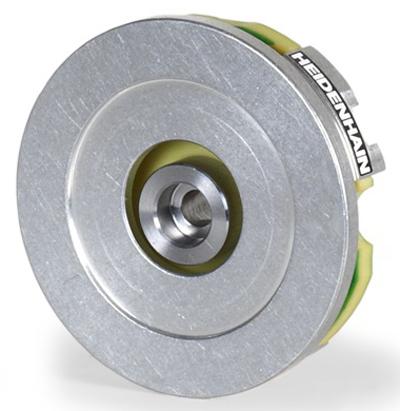
HEIDENHAIN announces the addition of its new slim-design ECI 1118 rotary encoder to its expansive product line. With a thickness of only 10mm and a diameter just less than 37mm, the new absolute ECI 1118 encoder offers motor manufactures more flexibility within their design, including the ability to fit into compact applications while still retaining the high quality feedback and speed control for which HEIDENHAIN is well known.
Providing a large amount of functionality in a small device, the ECI 1118 rotary encoder boasts a resolution of 18 bits and an accuracy of ±120".
The ECI 1118 joins the ExI 1100 series of encoders as part of the new generation of HEIDENHAIN encoders that feature improved robustness, easier mounting, and the option for functional safety. With compatible mounting to other 1100 series encoders, motor manufactures can feel confident designing these encoders into their products and being able to offer end-users multiple types of feedback technology, the option for functional safety, and the ability to handle more robust or contaminated environments. All this adds up to motor manufactures having far more adaptability when selling to markets such as robotics, the timber industry, packaging machines, paper machines, the steel industry, and automation.
The ECI 1118 also has a counterpart in HEIDENHAIN's EBI 1135 model rotary encoder which retains the same slim design and high quality single-turn feedback while also offering the option for multi-turn capabilities via a battery-buffered revolution counter. This revolution counter can attain distinguishable revolutions up to 16 bits with an external battery connected. Both these encoders have the advantages of previous bearingless inductive coders offered by HEIDENHAIN which include the non-contact design, resistance to contamination, no mechanical self-heating, reduced sensitivity to radial runout, and a high tolerance to vibration and shock.
Contact Details
Related Glossary Terms
- robotics
robotics
Discipline involving self-actuating and self-operating devices. Robots frequently imitate human capabilities, including the ability to manipulate physical objects while evaluating and reacting appropriately to various stimuli. See industrial robot; robot.
- tolerance
tolerance
Minimum and maximum amount a workpiece dimension is allowed to vary from a set standard and still be acceptable.

